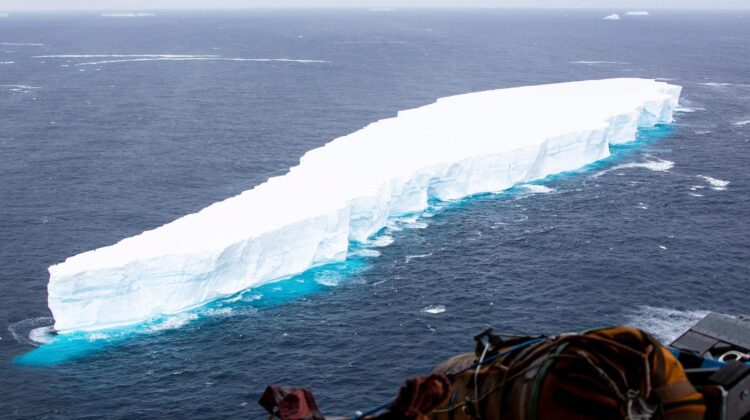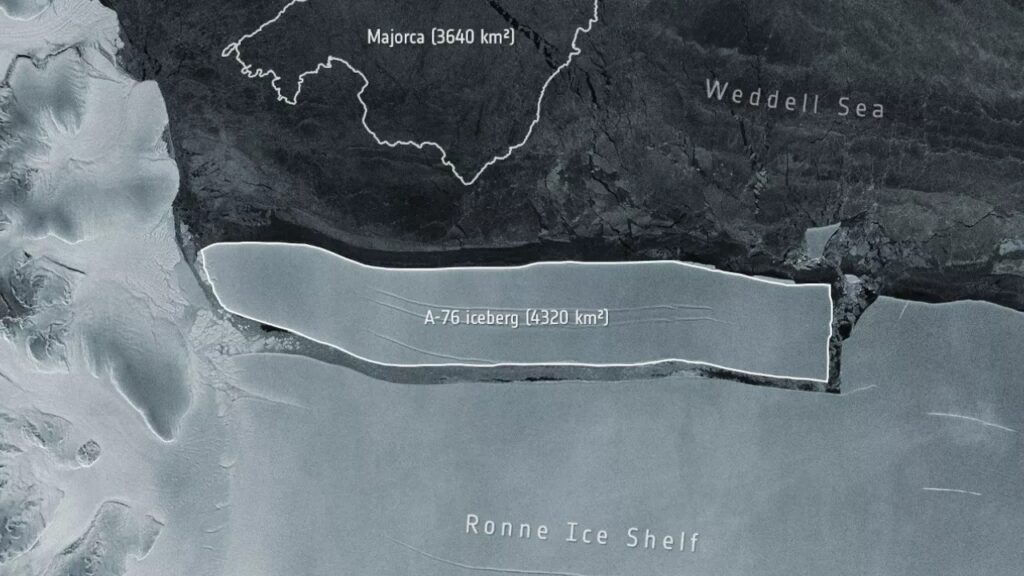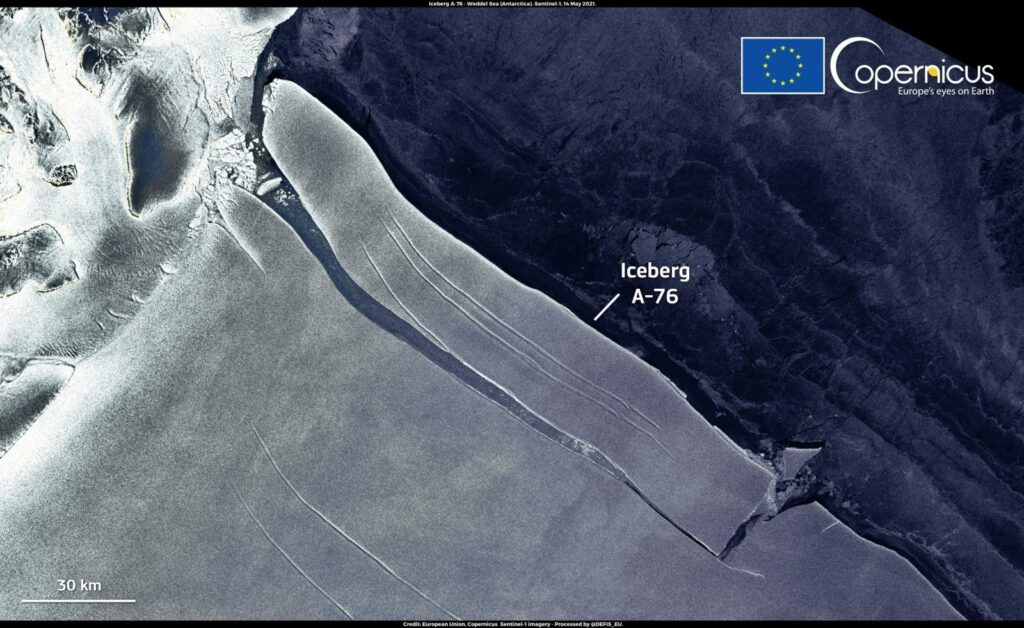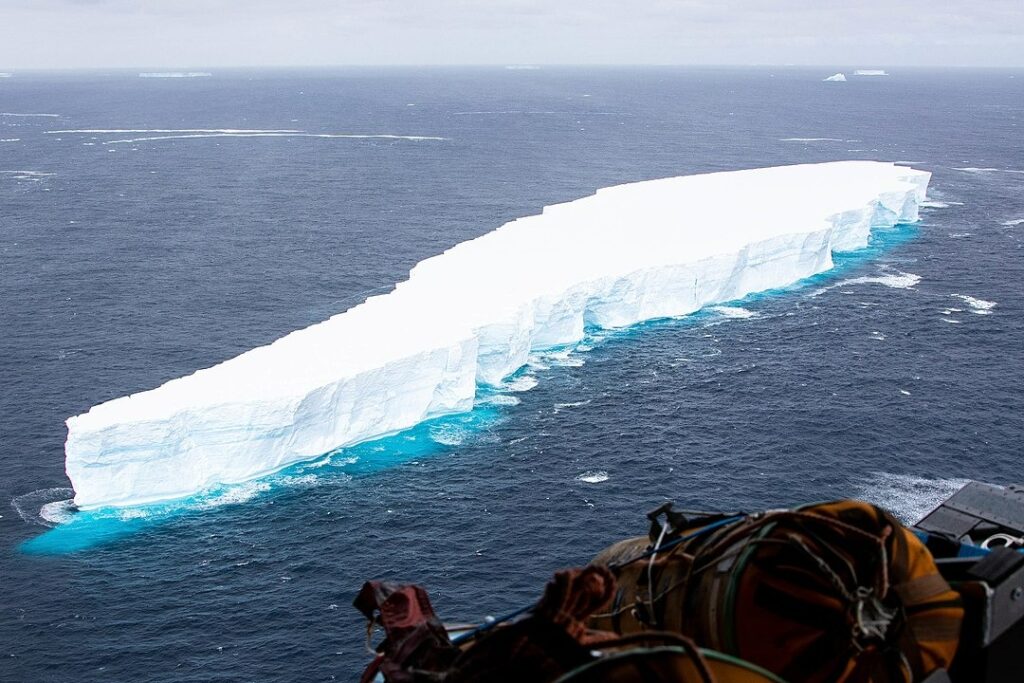
In a colossal event, an iceberg, A-76, half the size of Puerto Rico, has detached from Antarctica’s Ronne Ice Shelf into the Weddell Sea. Captivating satellite images depict its immense size, surpassing the dimensions of Manhattan and earning the title of the world’s largest floating iceberg.
The European Space Agency (ESA) confirms A-76 as “currently the largest berg in the world,” measuring around 170 kilometers (105 miles) long, 25 kilometers wide, and covering an area of 4,320 square kilometers (1,668 square miles). This makes it slightly larger than Spain’s Majorca.

Originally identified by the British Antarctic Survey and verified using Copernicus Sentinel-1 imagery, A-76 broke off the western side of the Ronne Ice Shelf. The Sentinel-1 mission, utilizing C-band synthetic aperture radar imaging, allows year-round monitoring of remote regions like Antarctica.
Polar oceanographer Keith Makinson first spotted the iceberg on May 13, capturing its dramatic separation from the ice shelf. A-76 now claims the title of the world’s largest iceberg, surpassing its predecessor, A-23A, floating in the Weddell Sea.

Last November, A68a, the former largest iceberg, raised concerns as it seemed on a collision course with South Georgia island. Home to numerous penguins and seals, a collision could have jeopardized their food gathering. Fortunately, A68a disintegrated before causing harm.
The Larsen Ice Shelf, from which A-68a broke, has witnessed rapid disintegration, potentially linked to global warming. While Earth’s average surface temperature has risen by one degree Celsius since the 19th century, Antarctica’s air has warmed over twice that amount.

The awe-inspiring images of A-76’s detachment serve as a visual testament to the dynamic changes occurring in Antarctica, prompting further examination of the impacts of climate change on these vast icy landscapes.

Leave a Reply